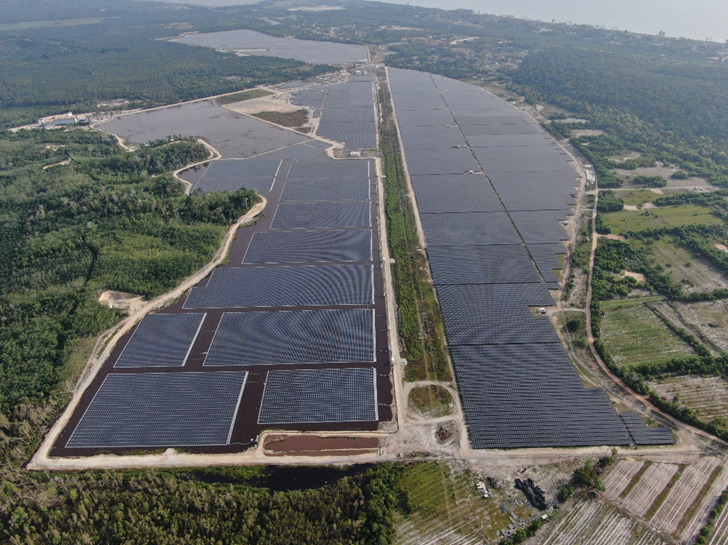
With rapid economic development and increasing energy demand coupled with limited land availability, floating solar presents an attractive solution by generating clean energy without using valuable land space. Floating solar installations can also reduce water evaporation from reservoirs and benefit from higher production efficiencies due to the cooling effect of water, but engineering and construction costs are usually higher than those for a ground-mounted solar farm, which has seen the growth of hybrid solar farms to offer the best of both worlds for grid-scale plants.
One such successful project is the 100MWac hybrid farm, located in Merchang in the northeastern Malaysian state of Terengganu. Owned and developed by Cypark Resources and commercially operational since 9 June, the plant deploys Trina’s Vertex modules and is projected to generate enough clean energy to offset an annual 202,024 tonnes of CO2 emissions.
Executive Chair at Cypark Resources Dato’ Ami Moris commented: “This is Malaysia’s largest hybrid solar power plant, consisting of 35MW of floating panels on the surface of the water and 65MW installed on land. This demonstrates our ability to integrate solar power plant development with the natural environment of Terengganu, which is susceptible to flooding.”
Elva Wang, Trina’s head for Southeast Asia, added: “This complex project’s successful operation is a testament to its design and implementation. We foresee significant opportunities in Southeast Asia for large-scale hybrid solar projects, integrating both floating and ground-mounted installations. We look forward to continuing our collaboration with Cypark Resources and appreciate that their trust in Trinasolar for this ambitious project aligns with Malaysia’s goal of achieving a 70% renewable energy mix by 2050.”
The versatility of the Vertex modules was crucial for the project’s success, with their dual-glass design offsetting the high humidity and saline nature of the environment faced by the 35MW floating segment.
Wang concluded: “This project is a clear demonstration of the potential for hybrid solar projects in the region and we look forward to driving more such initiatives and contributing to Southeast Asia’s renewable energy ambitions.”

